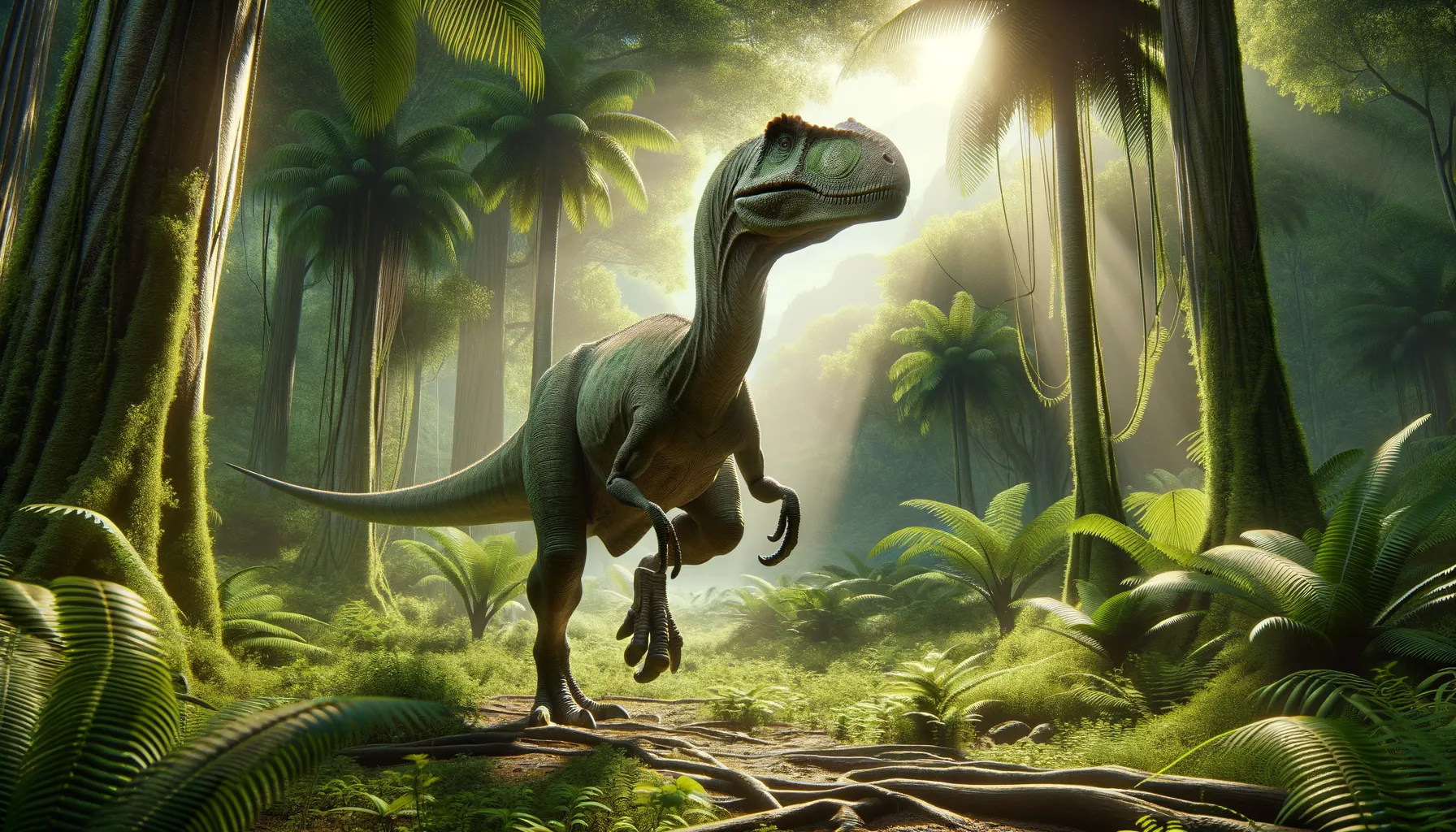
Probactrosaurus
The agile ancestor of duck-billed giants.
Period
Cretaceous
Length
Roughly 6 meters long.
Height
About 2 meters tall at the hip.
Weight
Approximately 1,000 kilograms.
Probactrosaurus was a mid-sized herbivorous dinosaur that roamed the Earth during the Early Cretaceous period. With a duck-billed appearance, it was an early relative of more advanced hadrosaurs. Its remains suggest a creature that walked on two or four legs, using a combination of speed and agility to navigate its lush, forested habitat. This dinosaur played a vital role in its ecosystem, thriving on a diet of fibrous plants and leaves.
Diet
Probactrosaurus was a herbivore, feeding primarily on the lush vegetation available during its time. Its dental structure allowed it to process fibrous plant material efficiently, making it well-suited for a diet of leaves and perhaps seeds.
Hunting
Being a herbivore, Probactrosaurus did not engage in hunting behavior typical of carnivorous dinosaurs. Instead, it foraged and used its well-developed senses to detect and avoid predators while searching for food.
Environmental challenges
Probactrosaurus lived in a changing environment where volcanic activity and shifts in climate impacted vegetation. Surviving required adaptation to these changes, including fluctuations in available food sources. Seasonal variations may have led it to migrate or adjust its feeding strategies to overcome these challenges.
Speed
Moderate, suitable for stable walking.
Lifespan
Around 20 to 30 years.
First discovery
Found in Inner Mongolia, China, 1960s.
Fun Facts
- Probactrosaurus was a plant-eating dinosaur that lived around 130 million years ago during the Early Cretaceous period.
- Its name, Probactrosaurus, means 'before Bactrosaurus,' highlighting its close relation to the later dinosaur Bactrosaurus.
- Probactrosaurus had a distinct beak-like mouth, perfect for munching on vegetation, making it a herbivore specialist.
- It was part of the hadrosaurid family, also known as 'duck-billed dinosaurs,' due to their unique mouth shape.
- Fossils of Probactrosaurus were first discovered in China, giving scientists insight into the diverse dinosaur inhabitants of the region.
- This dinosaur walked on both two and four legs, transitioning between them for feeding and movement.
- Probactrosaurus had a relatively small size compared to its hadrosaurid cousins, reaching lengths of about 5 to 6 meters.
Growth and Development
As a dinosaur of moderate size, Probactrosaurus exhibited growth patterns typical of its kind, which included a gradual increase in size over several years. Fossil evidence suggests it hatched from eggs and grew rapidly to reach maturity, developing stronger limbs and jaws suited for its herbivorous lifestyle.
Habitat
The habitat of Probactrosaurus was likely dominated by lush forests and floodplains common in the Cretaceous period. These environments would have provided ample food resources and shelter. Its ability to switch between bipedal and quadrupedal locomotion allowed it to navigate various terrains effectively.
Interaction with other species
Probactrosaurus coexisted with a variety of other dinosaurs, including predators. It likely moved in groups or herds to defend against these threats. Symbiotic relationships with other herbivores may have existed, allowing for shared feeding grounds and mutual protection from predators.
Natural lifespan
Probactrosaurus may have lived up to 30 years in the wild.
Reproduction
Like many dinosaurs, Probactrosaurus reproduced by laying eggs. Nesting sites would have been chosen for safety from predators, with multiple eggs laid in a clutch. Parental care practices are not well documented but may have involved guarding the nest from threats until hatching.
Social behaviour
Probactrosaurus may have exhibited herd behavior, moving in groups for social interaction and protection. Herding would have provided advantages, such as increased vigilance against predators and more efficient foraging efforts.
Fossil locations
Fossils of Probactrosaurus have been primarily discovered in Inner Mongolia, China. These sites have provided significant insight into its anatomy and ecology, helping to establish its role and timeline in the Cretaceous period.
